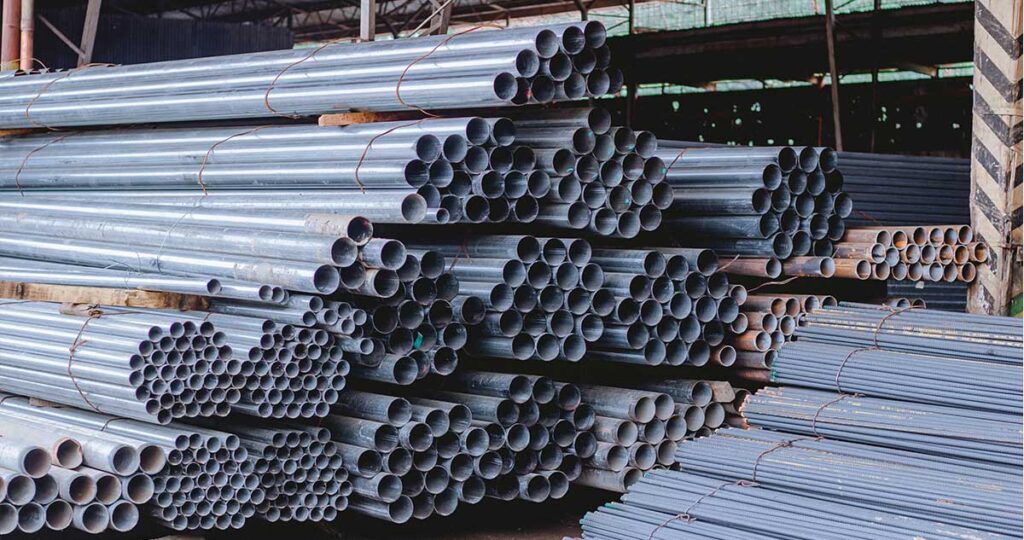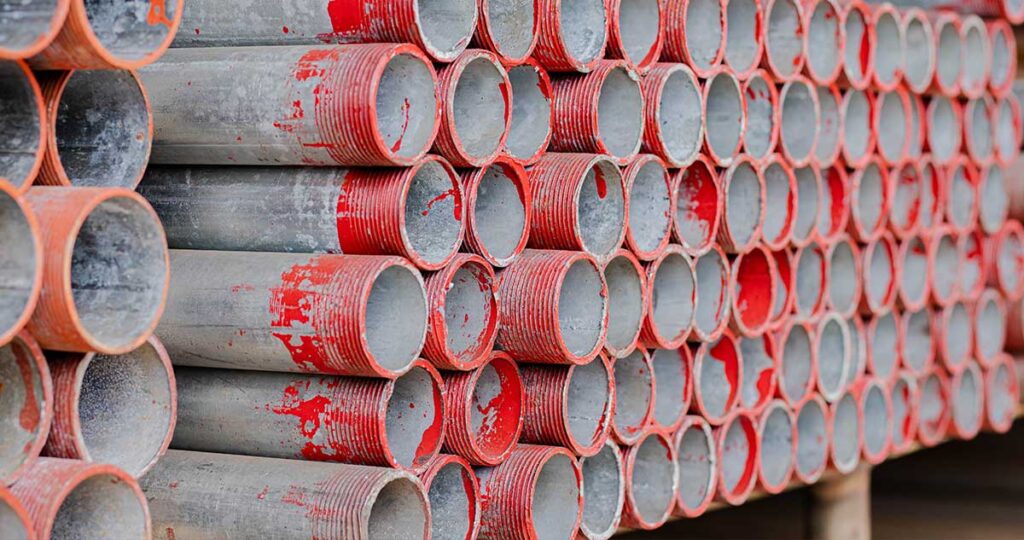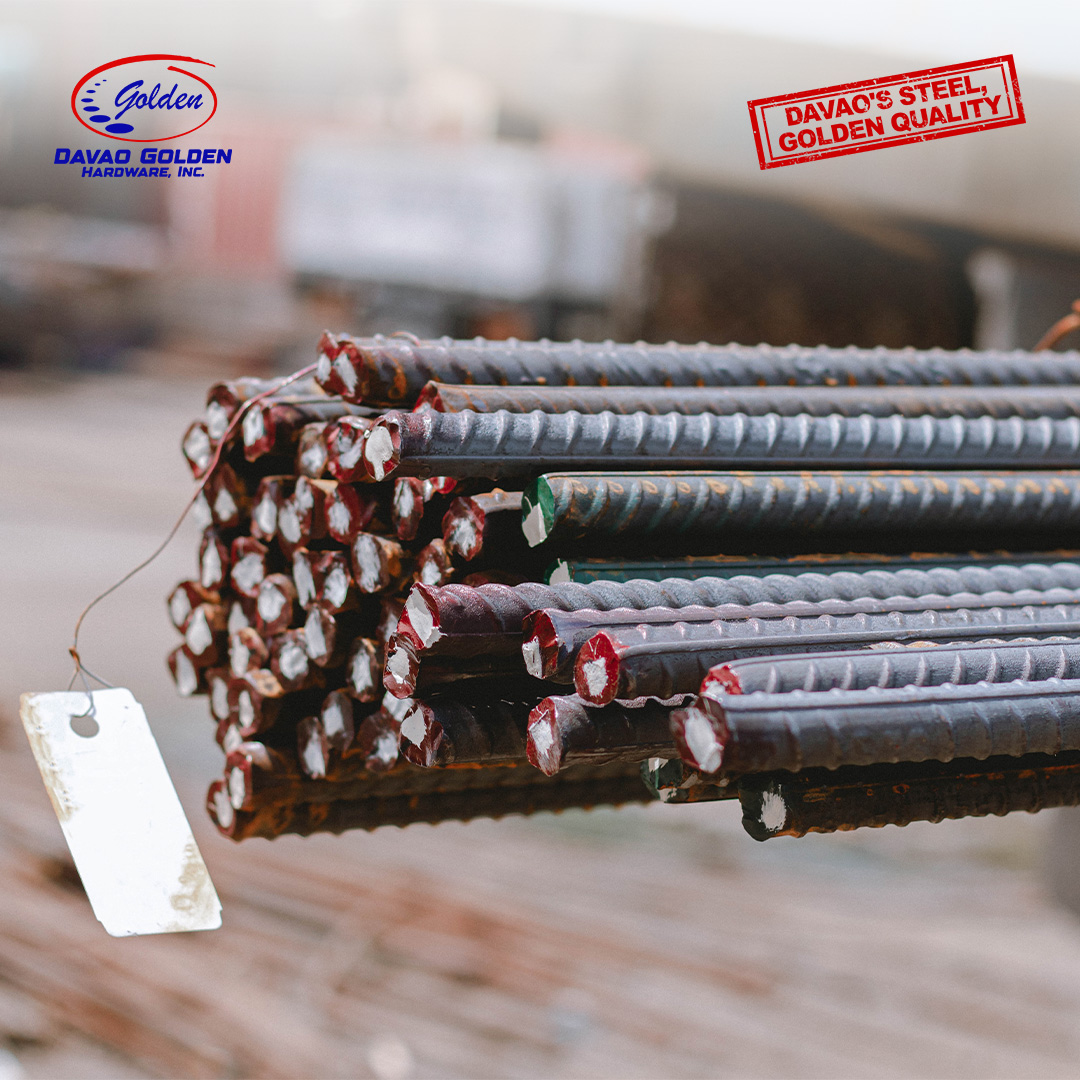Are you planning a plumbing project or construction work that requires durable piping? You’ve likely come across GI pipes as a potential option. At Davao Golden Hard Inc., we provide high-quality GI pipes for all your construction and plumbing needs. This comprehensive guide will answer all your questions about GI pipes and help you determine if they’re the right choice for your project.
What is a GI Pipe?
GI pipe, or Galvanized Iron pipe, is a steel pipe that has been coated with a layer of zinc to prevent rusting and corrosion. This galvanization process significantly extends the lifespan of the pipe, making it ideal for water distribution, fire protection systems, and various structural applications. Our premium GI pipes are manufactured to meet industry standards for durability and performance.

According to the American Galvanizers Association, the zinc coating can protect steel for 50+ years in many environments, making GI pipes an excellent long-term investment for your plumbing needs.
What Does GI Stand for in Plumbing?
In plumbing terminology, GI stands for “Galvanized Iron.” Despite the name, modern GI pipes are typically made from steel rather than iron, but the term has persisted in the industry. The galvanization process involves coating the steel pipe with a protective layer of zinc, which shields the metal from exposure to water and air, preventing rust and corrosion.

The International Association of Plumbing and Mechanical Officials (IAPMO) recognizes GI pipes as a standard material for many plumbing applications due to their reliability and longevity.
Is GI Pipe Better Than PVC?
Whether GI pipe is better than PVC depends on your specific application. Here’s a comparison:
GI Pipe Advantages:
- Greater strength and durability
- Higher pressure resistance
- Can withstand extreme temperatures
- Fire-resistant
- Longer lifespan in outdoor applications
PVC Advantages:
- Lightweight and easier to install
- No corrosion concerns
- Lower cost
- Smoother interior for better water flow
- Quieter operation (less water hammer)
For applications requiring strength, heat resistance, or outdoor exposure, our GI pipes are often the superior choice. However, for indoor plumbing with lower pressure requirements, PVC might be more cost-effective.
The Plastic Pipe Institute and Steel Tube Institute provide detailed comparisons of different piping materials for various applications.
How to Paint GI Pipes
Painting GI pipes can provide additional protection and aesthetic appeal. Follow these steps:
- Clean the pipe – Remove any dirt, grease, or loose zinc coating with a wire brush and soapy water.
- Sand the surface – Lightly sand to create a rough surface for better paint adhesion.
- Apply primer – Use a metal primer specifically designed for galvanized surfaces.
- Paint the pipe – Apply two coats of acrylic or oil-based paint, allowing proper drying time between coats.
- Add a protective clear coat – For outdoor pipes, consider adding a weather-resistant clear coat.
For professional-grade painting techniques, the Paint Quality Institute offers excellent guidelines on properly preparing and painting metal surfaces.
How to Connect GI Pipes
Connecting GI pipes properly ensures a leak-free and durable plumbing system. Here are the common methods:
Threaded Connections
- Apply pipe thread compound or PTFE tape to the male threads
- Screw the pipe into the fitting with a pipe wrench
- Tighten until snug but avoid over-tightening which can damage the threads
Welded Connections
For permanent connections, welding provides the strongest joint. This requires professional welding equipment and skills (see the welding section below).
Using Unions and Flanges
For connections that may need future disassembly, use unions or flanges according to manufacturer specifications.
The Mechanical Contractors Association of America provides comprehensive guidelines for proper pipe connection techniques.
How to Determine the Diameter of PVC and GI Pipes
Determining the correct pipe diameter is essential for your plumbing system to function properly:
For Existing Pipes:
- Measure the outside diameter using calipers or a pipe diameter tape
- Subtract the wall thickness (for GI pipes, typically 2.6mm to 4.5mm depending on the schedule)
- Convert to nominal pipe size using standard pipe charts
For New Installations:
- Calculate the required flow rate in gallons per minute
- Consider pressure requirements for your application
- Use flow rate charts to determine the appropriate pipe diameter
- Visit our store to see our range of GI pipes in various diameters
The American Society of Plumbing Engineers (ASPE) offers technical resources for proper pipe sizing and system design.
How to Weld GI Pipes
Welding GI pipes creates permanent, strong connections but requires proper technique:
- Remove the galvanized coating at the joint area (the zinc coating produces toxic fumes when heated)
- Clean the pipe ends thoroughly to remove any residue
- Align the pipes using a pipe alignment tool
- Apply tack welds to hold the position
- Complete the weld using appropriate welding rods and technique
- Apply cold galvanizing compound to the welded area to prevent corrosion
Note: Welding should only be performed by trained professionals with proper safety equipment due to the potentially toxic fumes from the zinc coating.
For professional welding standards and safety guidelines, refer to the American Welding Society.
How GI Pipes Are Made
Understanding the manufacturing process helps appreciate the quality of our GI pipes:
- Steel strip formation – Hot-rolled steel strips are formed into tubular shapes
- Seam welding – The edges are welded together using electric resistance welding
- Sizing and straightening – The pipes are sized to exact dimensions and straightened
- Cleaning – Pipes are cleaned with acid to remove scale and impurities
- Galvanization – Pipes are dipped in molten zinc (approximately 450°C)
- Finishing – The pipes are cooled, inspected, and threaded if required
- Quality testing – Rigorous testing ensures adherence to international standards
The World Steel Association provides extensive information on steel manufacturing processes and quality standards.
See GI Pipe Manufacturing in Action
Want to see how GI pipes are manufactured? Check out this informative video:
Why Choose Davao Golden Hard Inc. for Your GI Pipe Needs
At Davao Golden Hard Inc., we pride ourselves on providing high-quality GI pipes that meet or exceed industry standards. Our pipes are:
- Manufactured with precision for consistent quality
- Available in various diameters and lengths
- Competitively priced
- Backed by our customer satisfaction guarantee
- Delivered promptly to your construction site
Conclusion
GI pipes remain a popular choice for many plumbing and construction applications due to their strength, durability, and corrosion resistance. Whether you’re working on a residential plumbing project or a large commercial installation, understanding the properties and proper handling of GI pipes is essential for a successful outcome.
Visit our product page to explore our selection of premium quality GI pipes or contact our team of experts for personalized advice on your specific plumbing needs.
For more information on building codes and plumbing standards in the Philippines, visit the Philippine National Master Plumbing Code.




